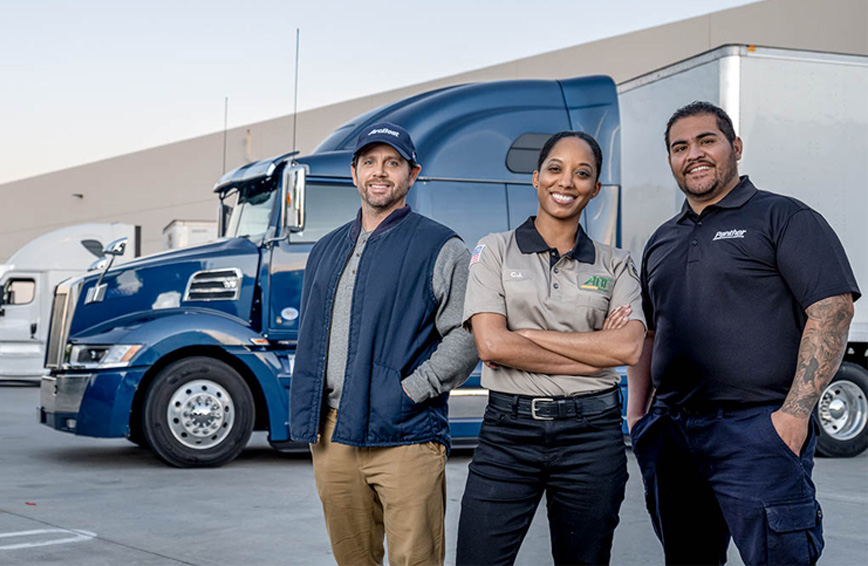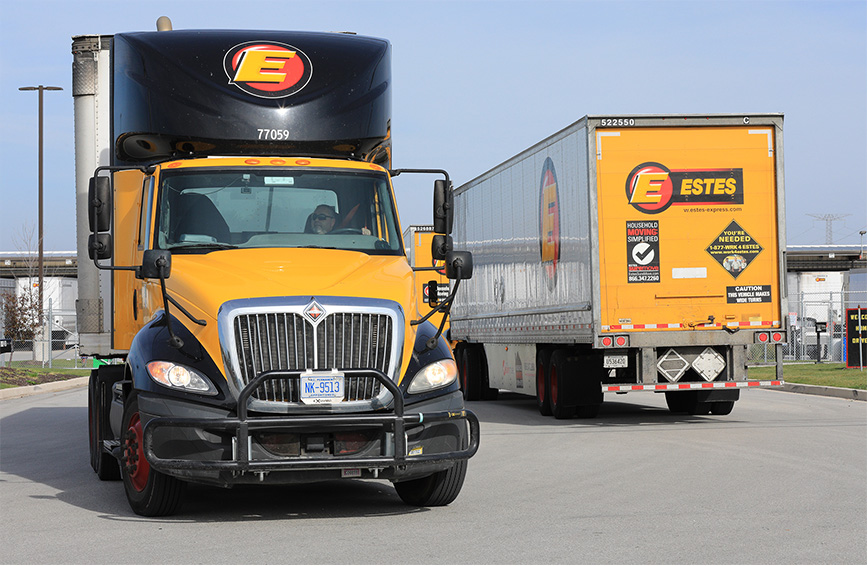The U.S. trucking industry has fewer less-than-truckload (LTL) carriers than full truckload carriers. But if you're a shipper, you'll find that different types of LTL carriers can offer unique features and benefits to match your cost, service levels, and speed requirements–even if their network doesn't fall neatly into one of the categories below:
National LTL carriers
National LTL carriers ply coast-to-coast and border-to-border routes, operating large, expanded, dense freight networks on a hub-and-spoke model.
Some national LTL carriers rely on partner carriers to provide final-mile and delivery services. Their network density and scale mean they can provide competitive pricing in specific lanes. They can also make it easier to consolidate and streamline your LTL freight–helpful if you move LTL freight throughout North America. On the other hand, rates and service levels in specific lanes may not be as strong as more specialized carriers.
Multi-regional LTL carriers
Multi-regional LTL carriers are great for shipments spanning a few states within a defined area. These LTL carriers typically have dense regional networks.
With freight pickup & delivery within a regional carrier's coverage area and consistent LTL freight volumes, you may find competitive pricing and higher service levels more efficiently. But if you have shipments outside their coverage area, you will need to source another provider. These LTL carriers may also have less capacity or lack sophisticated technology.
Sub-regional LTL carriers
Sub-regional LTL carriers haul freight in a distinct part of a region and can be an excellent solution for LTL shipments traveling shorter distances. These LTL carriers offer competitive service and rates in their service area, making it easier to secure preferential pricing for consistent freight volume moving within their service footprint.
Asset-light LTL carriers
Asset-light LTL carriers run a business model to maximize their coverage area while reducing the trucks, drivers, and terminals they operate.
They rely on other truckload and LTL providers' drivers and trucks. They usually complete long-haul hub transfers using intermodal or full truckload shipping, then outsource the final-mile deliveries to regional or sub-regional LTL carriers. Since they use intermodal transport, transit times are generally longer than standard LTL shipping. But this budget-friendly option is great if you want comprehensive coverage that will reduce the carriers you use and save the most money. The only downside? If your products experience more handling and transfers, you may experience more potential damage.
Load-to-ride LTL carriers
Load-to-ride LTL carriers handle bulky and/or long-range shipments. This LTL carrier operates like a multi-stop truckload carrier: One driver picks up multiple shippers' freight and delivers it straight through with fewer or no stops at terminals and more direct delivery routes. This LTL mode eliminates the need for excessive product handling. It can make sense with long-range shipments that cross multiple regions and if you are willing to be flexible.
Reefer LTL carriers
Lastly, refrigerated LTL carriers–AKA reefer LTL carriers–operate similarly to load-to-ride carriers. Reefer LTL carriers focus on long-range shipments, rarely transfer products in terminals, and haul goods with similar temperature requirements.
Choosing one or more suitable LTL carriers can be a complicated task. Optym works with many different types of LTL carriers by helping them improve efficiencies within their operations. Reduce costs, optimize routes, improve customer service, and improve operations with advanced analytics and optimization found within Optym's haul solutions. Contact Optym today.




-2.jpg)